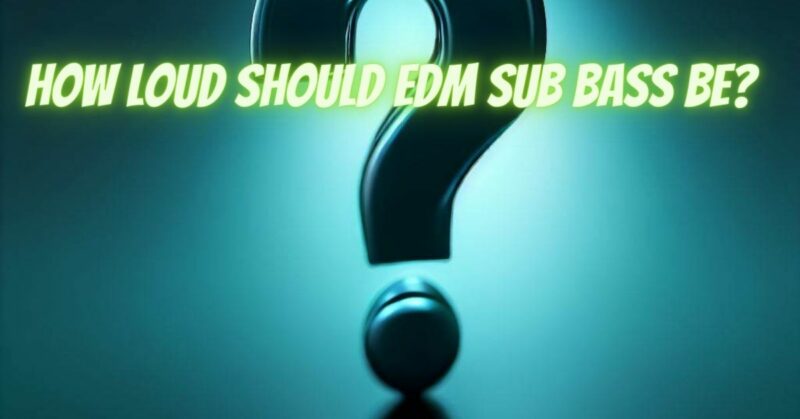Electronic Dance Music (EDM) is renowned for its bone-shaking sub bass that propels listeners into a dance-induced trance. However, achieving the perfect balance for sub bass volume can be a challenge. In this article, we’ll delve into the considerations and guidelines for determining just how loud your EDM sub bass should be to create a powerful and balanced mix.
The Importance of Sub Bass in EDM
Sub bass is a defining element of EDM, responsible for the genre’s visceral impact and dancefloor energy. It serves several key roles:
- Groove and Rhythm: Sub bass frequencies establish the groove and rhythm of the track, driving listeners to move in sync with the beat.
- Energy and Impact: The powerful, resonant nature of sub bass adds energy and impact, making the music feel larger-than-life.
- Emotional Depth: Sub bass can elicit emotional responses, enhancing the connection between the music and the audience.
Determining Sub Bass Volume
- Balance with Kick Drum: Achieving the right balance between the sub bass and kick drum is crucial. The kick drum often occupies the same frequency range as the sub bass, so they should complement each other without overpowering one another.
- Sub-Bass as a Supporting Element: While sub bass is essential, it should serve as a supporting element in the mix, not the dominant force. It should be felt and heard but not drown out other elements.
- Genre Considerations: Different EDM subgenres may have varying sub bass volume preferences. For example, genres like dubstep and trap often feature prominent, in-your-face sub bass, while progressive house may have a more subdued approach.
- Monitor Environment: Ensure that you’re monitoring your mix in an acoustically treated space with quality studio monitors or headphones. This will help you make accurate volume decisions.
- Reference Tracks: Refer to professionally mixed and mastered tracks in your genre to get a sense of how loud the sub bass should be in relation to other elements.
Technical Considerations
- Headroom: Leave adequate headroom in your mix to prevent clipping and distortion. Sub bass that’s too loud can push your mix into the red, resulting in unwanted artifacts.
- Subwoofer and Speaker Compatibility: Be aware of the capabilities of your subwoofer and speakers. Pushing them beyond their limits can lead to distortion and a loss of clarity.
- Equalization (EQ): Use EQ to shape the sub bass and prevent excessive energy in unwanted frequency ranges. This can help create a cleaner and more focused sub bass sound.
- Sidechain Compression: Sidechain compression can be used to create space for the kick drum by momentarily reducing the sub bass’s volume when the kick hits.
Determining how loud your EDM sub bass should be is a nuanced process that involves balancing various elements, considering genre conventions, and ensuring technical accuracy. Ultimately, the ideal sub bass volume will vary depending on the context of your mix and the emotions you wish to convey. By carefully listening, referencing professional tracks, and using technical tools wisely, you can find the sweet spot for your sub bass that delivers a powerful and balanced EDM experience.


